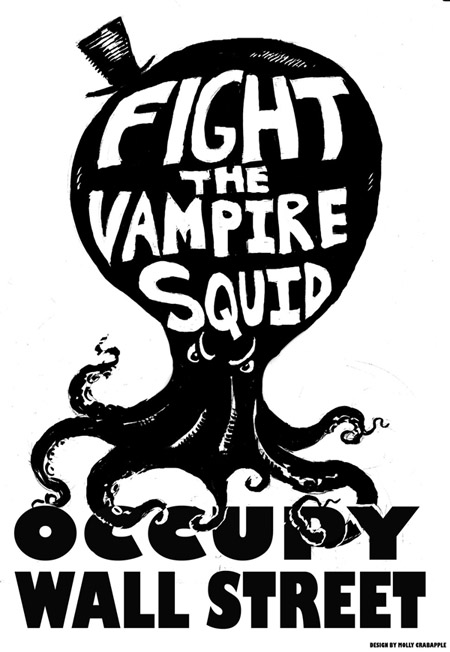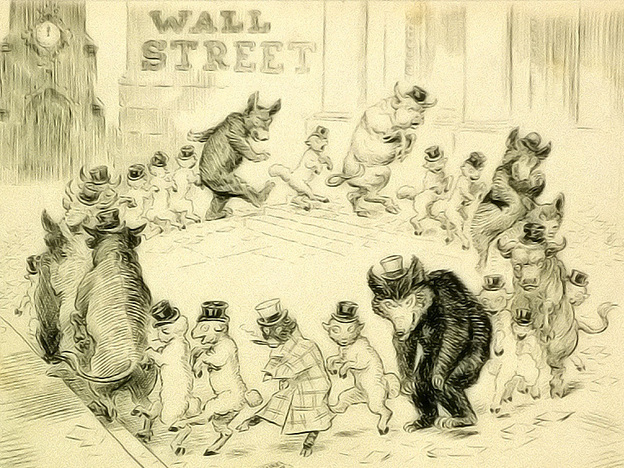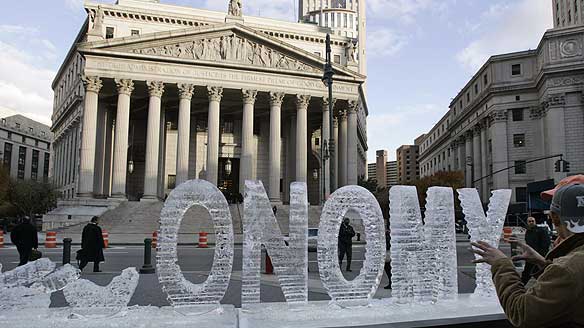Wall Street Protests and History
Turning to Wall Street and its history, Beverly Gage has argued that the financial center was the site of regular demonstrations throughout the 19th and 20th centuries in her book The Day Wall Street Exploded.
Rolling Stone’s Matt Taibbi described Goldman Sachs as “a great vampire squid wrapped around the face of humanity, relentlessly jamming its blood funnel into anything that smells like money.” This image has been taken up at recent protests against “big banks,” including Occupy Wall Street.
But this use of cephalopods has historical precedent, as Mother Jones’ David Gilson points out. For example, this 1904 illustration shows a Standard Oil octopus “wrapping its tentacles around the Capitol and average Americans, while eyeing the White House.”
Wall Street remained a target of satire throughout the early 20th century. In this 1908 image, we see cunning wolves, pigs and bulls clad in top hats protectively circling in their Wall Street den.
According to Gage, demonstrators represented a diverse political spectrum including Populists, members of the Socialist Party, labor organizers, communists, and anarchists. These demonstrations culminated in the 1920 terror attack on JP Morgan that killed 38 and injured hundreds.
Wall Street again surfaced as a target with the more recent financial crisis. This 2008 ice sculpture by Marshall Reese and Nora Ligorano, “Main Street Meltdown,” depicts a literal financial meltdown. As another key arena of visual protest, public art often works to subvert significant icons and symbols of dominant culture, in this case the monumental architecture of the Supreme Court.
Next: The Revolution Will Be Hashtagged: Culture-Jamming and Rewriting Popular Culture







[…] Visual Culture of the Occupation. […]